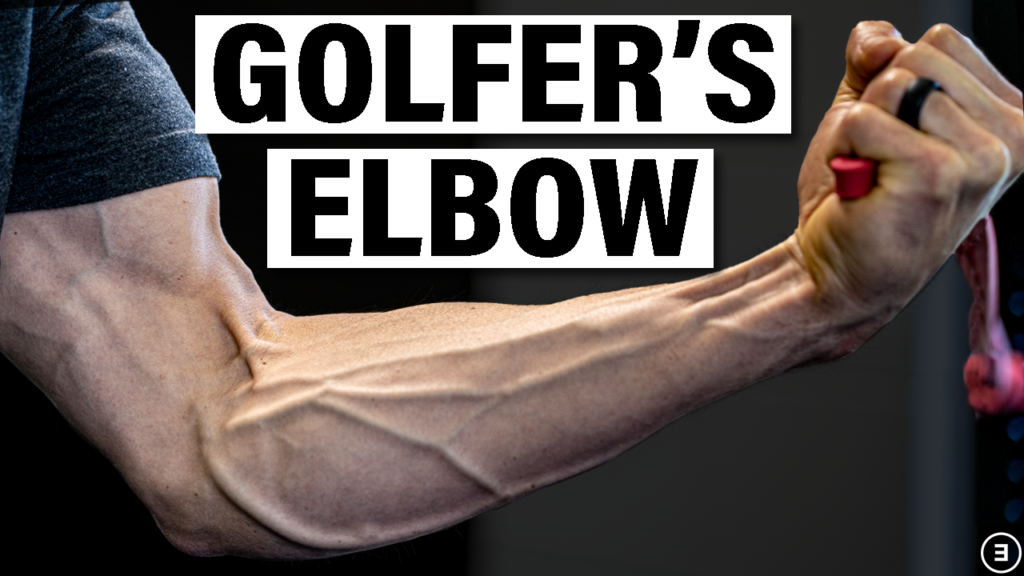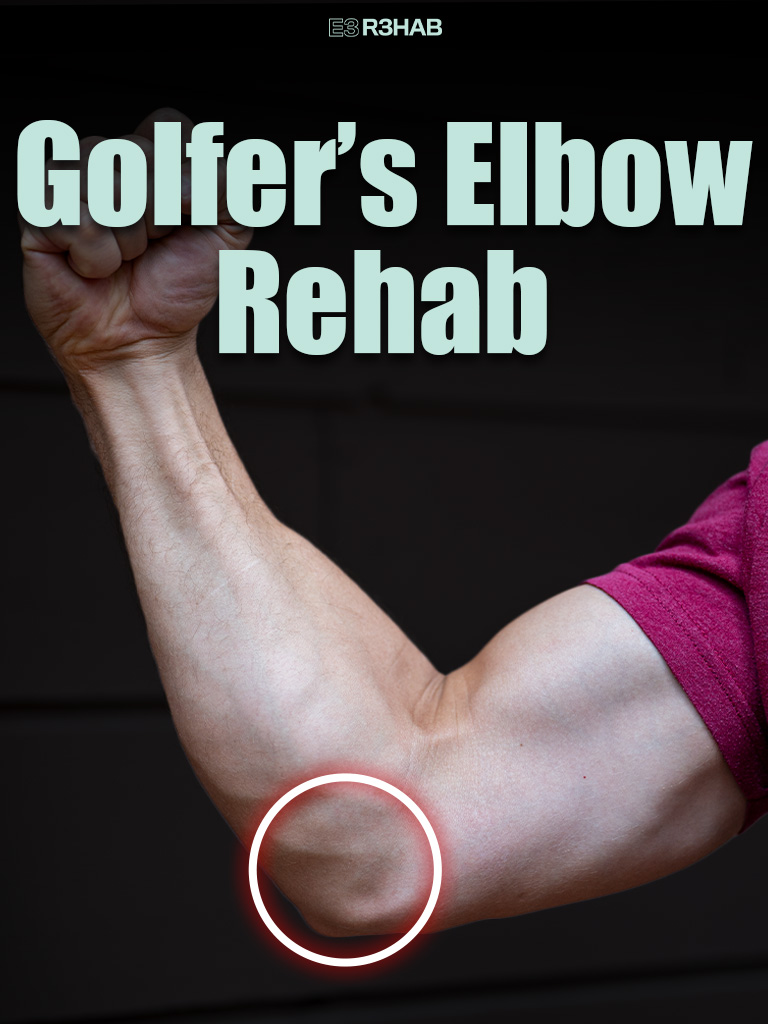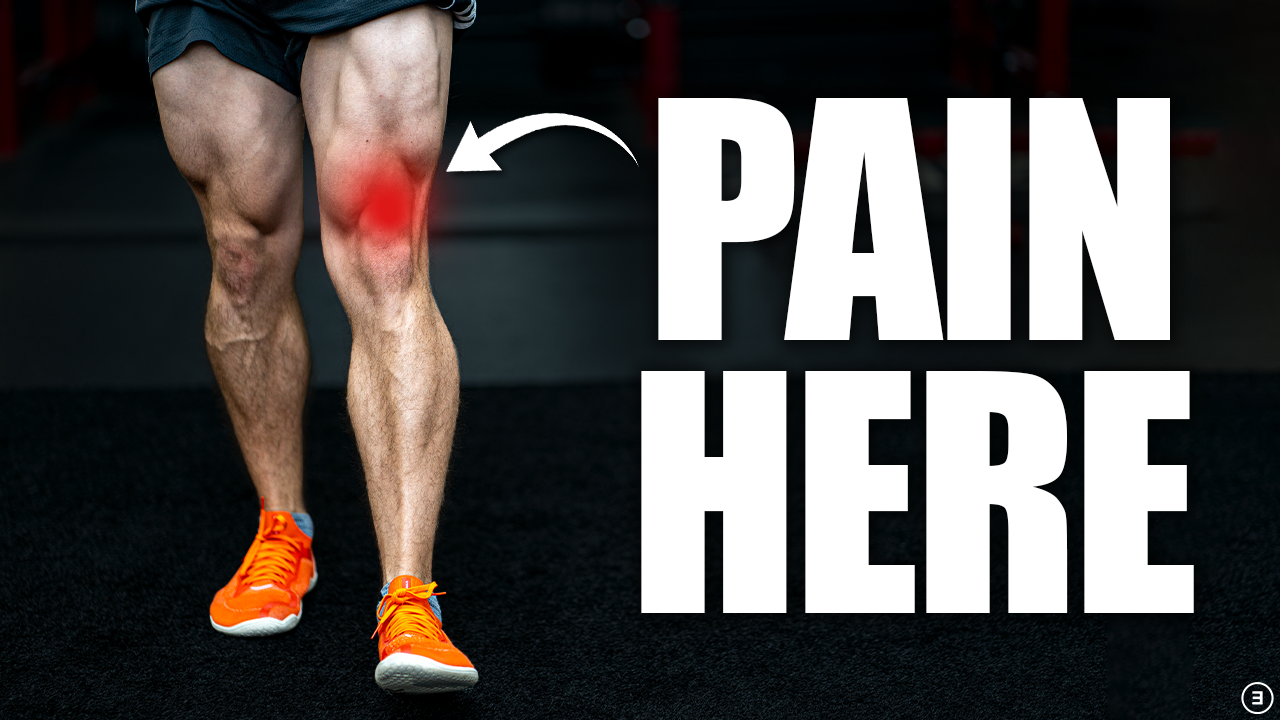The purpose of this blog is to discuss the diagnosis of golfer’s elbow, review exercises (including sets, reps and the rationale behind the exercise selection), and provide guidance on pain and activity modifications. The exercises shown are taken directly from our 16 week Golfer’s Elbow program.
Golfer’s Elbow Diagnosis
Those with golfer’s elbow typically experience pain along the inside part of the elbow, near the medial epicondyle of the humerus, with gripping, twisting, lifting, and other similar movements.
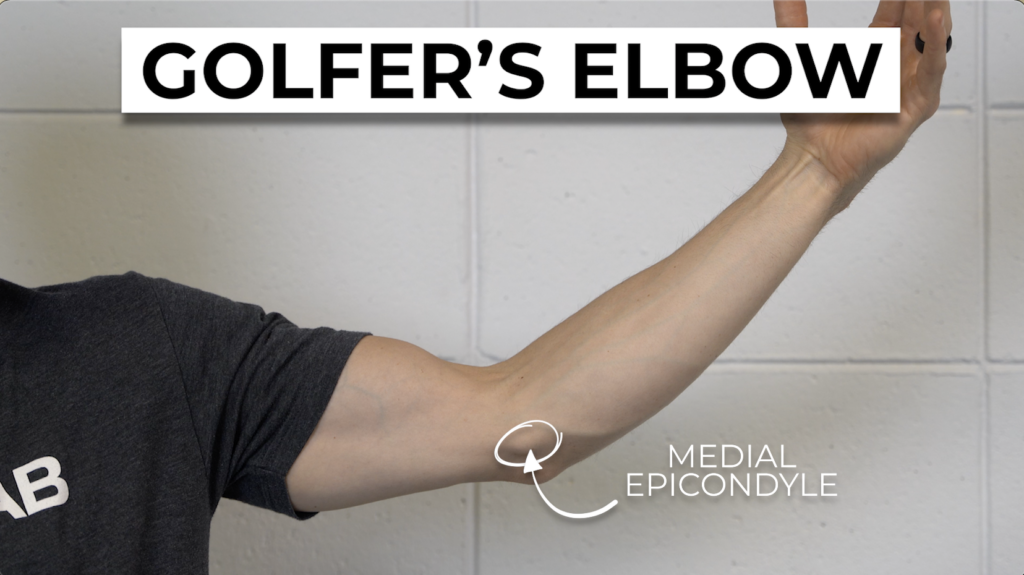
It is commonly known as medial epicondylitis because it was thought the tendons around this area were inflamed – the suffix “-itis’ implying inflammation of the medial epicondyle.
However, a 2019 consensus statement, determined that medial elbow tendinopathy is a more appropriate term, and is defined as “persistent tendon pain and loss of function related to mechanical loading.”
A very simplified explanation is that this occurs when loads exceed your capacity, or in other words, the demand of your activity on your elbow is greater than your ability to tolerate it.
This is where exercises and activity modifications can help, as they allow you to build your capacity back up, ultimately allowing you to tolerate more demand, or load.
Golfer’s Elbow Exercises
Exercises will place an emphasis on targeting local tissues of the forearm and elbow, as well as shoulder strengthening exercises and thoracic movements.
Note: the following exercise options are taken directly from day 2 of our Golfer’s Elbow Program. For more information on this program, click here.
Thoracic Movements
Since those who experience golfer’s elbow, typically engage in activities requiring higher demands of thoracic and shoulder mobility (such as golf, tennis or throwing sports), improving these motions can potentially help reduce unwanted stress at the elbow (Mackenzie et al., Miyashita et al., Robinson et al.)
Half kneeling thoracic rotation. Start in a half kneeling position and rotate over the “up” knee, twisting through your mid to upper back. As you rotate, keep your eyes on your hand.
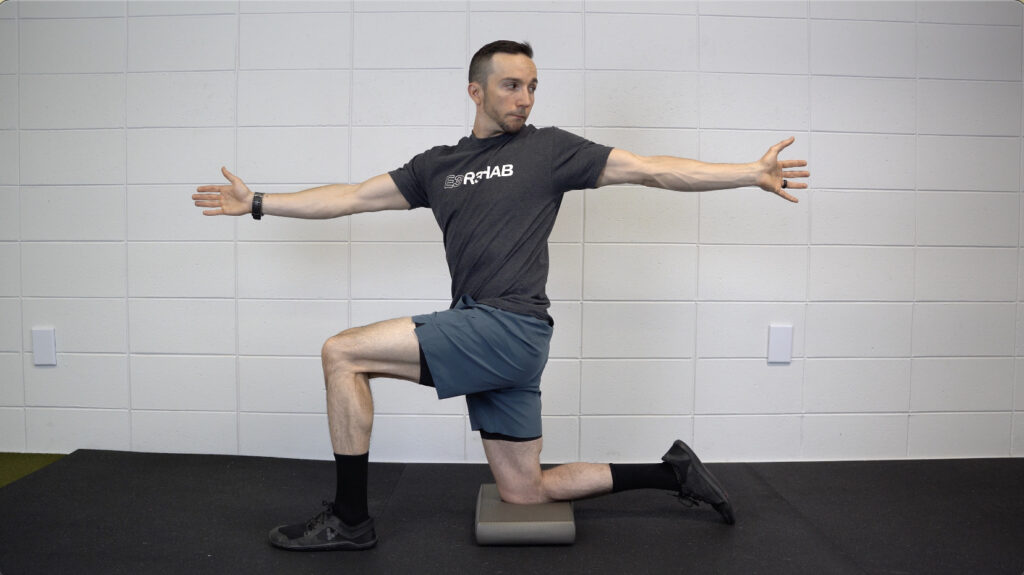
Thoracic extension on a bench. Place your elbows on a bench or another surface and hold your hands together. As you sit back toward your heels, bend your elbows and actively pull your chest through your arms (you may also feel a stretch in the triceps and lats). Hold that end position for 1-2 seconds and then repeat.
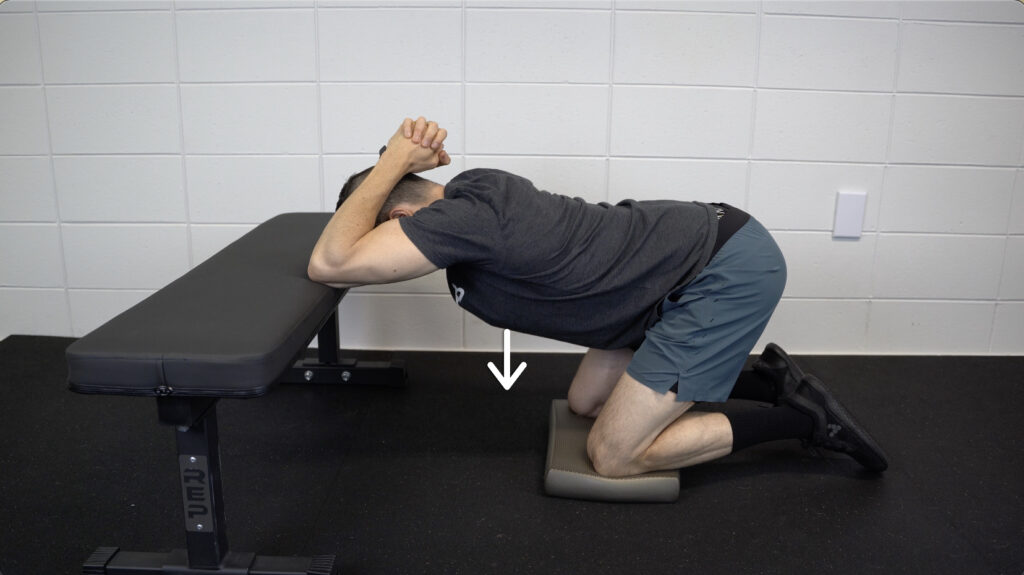
Perform each movement as a superset for 1-2 sets of 8-10 repetitions.
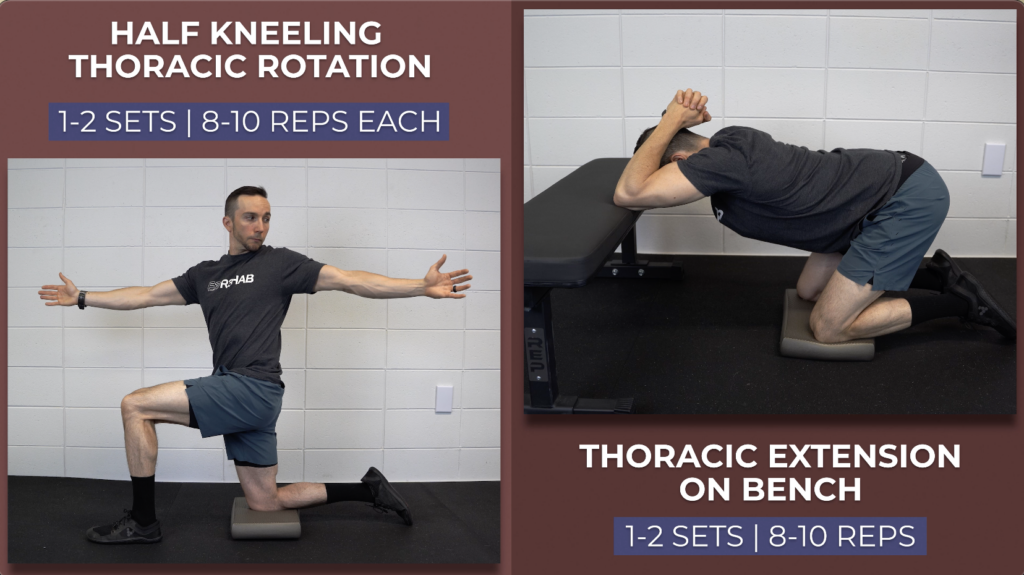
Shoulder Strength
Strengthening the muscles around the shoulder and scapula may be helpful for reducing the relative demands placed on the elbow and have been shown to result in better outcomes than programs which only focus on strengthening the elbow. (Elmaboud et al., Hause, Nabil et al.)
Prone Y. Lie on a bench, another elevated surface or you can perform on the ground if needed. Keeping your elbows straight, lift your arms up toward the ceiling so they form a “Y” with your body. If this is too easy, you can make this more challenging by holding weights in your hands.
Perform for 3-4 sets of 8-15 repetitions, 1-3 reps shy of failure.


Single arm dumbbell pullover on a bench. Slowly pull a weight over your head as far as tolerable while keeping the elbow straight. As you move the weight overhead, think about flattening your low back to the ground to really engage your abs. Hold that bottom position for 1-2 seconds and then repeat.
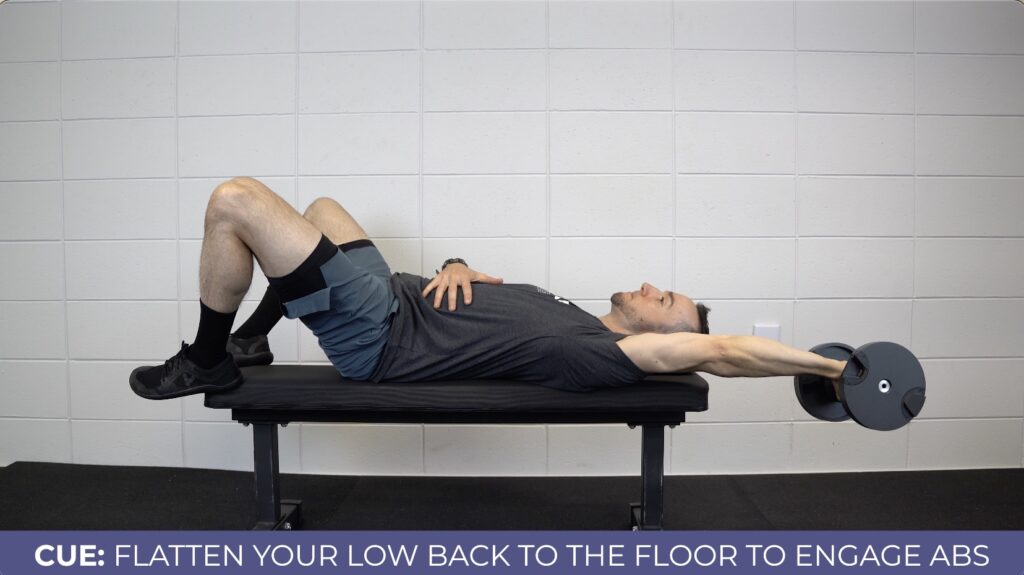
If you do not have a dumbbell or weight, but do have access to a band, an alternative is a hip hinge single straight arm pulldown. Hinge in the hips, keep your low back relatively flat, and with a straight arm pull the band down toward your side. At the bottom, think about squeezing behind your armpit.


Perform both the prone Y and either the single arm dumbbell pullover or hip hinge single straight arm pulldown for 3-4 sets of 8-15 repetitions on each arm, 1-3 reps shy of failure.
Forearm and Elbow Strength
The last 2 exercises will place an emphasis on local tissues of the elbow and forearm – the wrist flexors and pronators. Pain around the medial elbow can result in disuse and weakness of these muscles, so the goal is to emphasize isolated strengthening in order to increase their strength and capacity (Pienimäki et al., Svernlöv et al., Tyler et al.)
Dumbbell wrist flexion. Support your forearm on a table or bench, with your elbow bent. Slowly bring the palm up toward the ceiling and then with control, lower it back down to the floor.
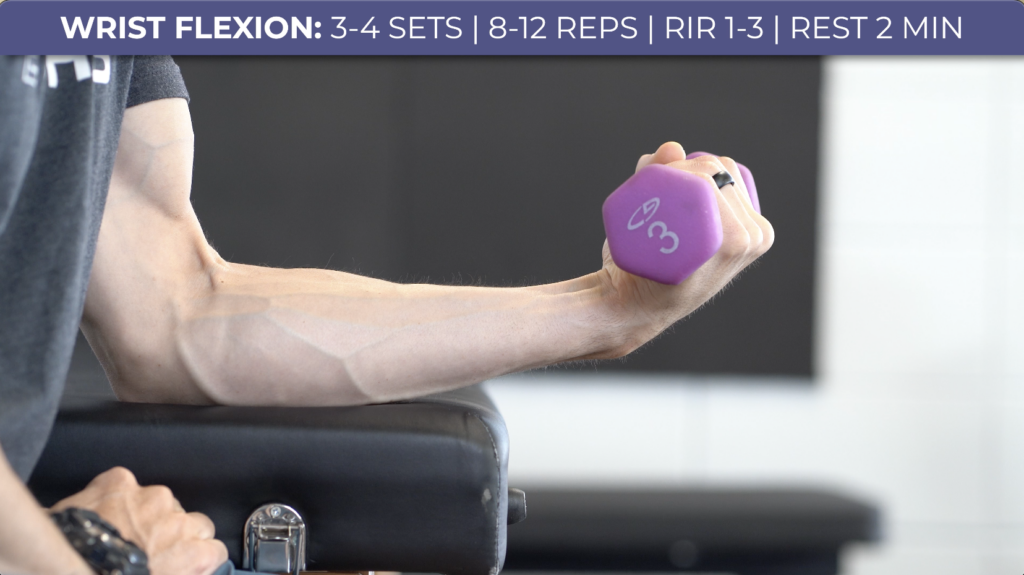
Dumbbell pronation. This exercise will focus on building strength of your forearm pronators. Similar to the previous exercise, support your forearm on a table or bench, with elbow bent. Start with the dumbbell facing up, and rotate it outward, ending with your palm facing up. Make sure you move slowly and with control throughout the motion.
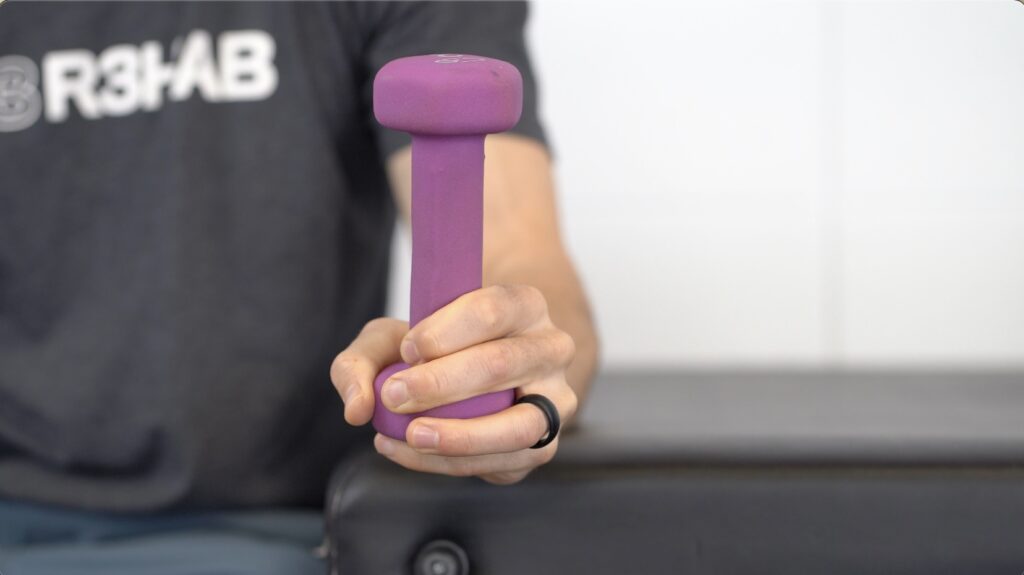

For either of these exercises, if you do not have a dumbbell or weight, you can alternatively use a band. The wrist flexion exercise will be performed in the same position, while forearm pronation will be performed standing with a band anchored securely to a door or another object.

For both exercises, perform 3-4 sets of 8-12 repetitions on each side, 1-3 reps shy of failure. Rest 2 minutes between sets.
Can You Continue with Other Lifts?
Yes, but follow the previously mentioned parameters regarding pain. Additionally here are some possible modifications:
For deadlift or barbell bent over rows, if higher loads exacerbate symptoms you can consider using lifting straps to reduce griping demands.
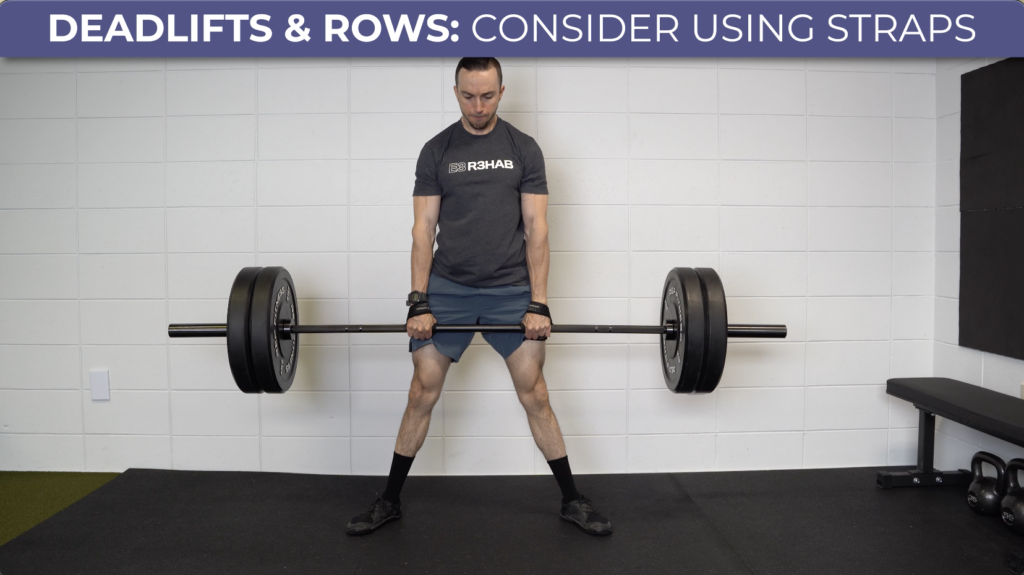
For pull ups, you can change the style of grip. Try supinated or palms up, pronated or palms down, or neutral, whichever you find more tolerable.
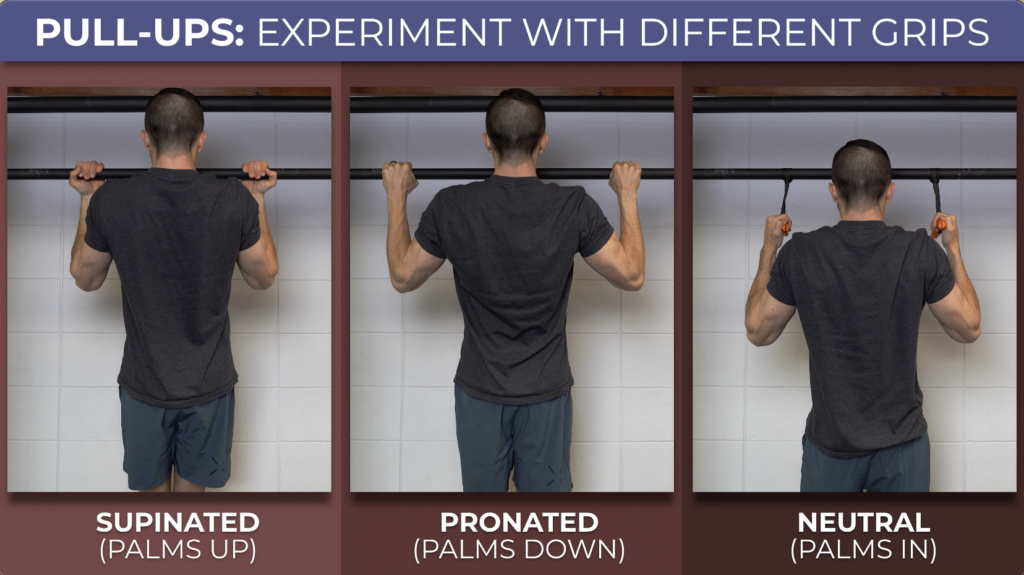
And finally, consider using dumbbells, kettlebells, cables, or machines as opposed to a barbell, since these will allow for more variability in shoulder and forearm positioning, potentially reducing stress at the elbow.
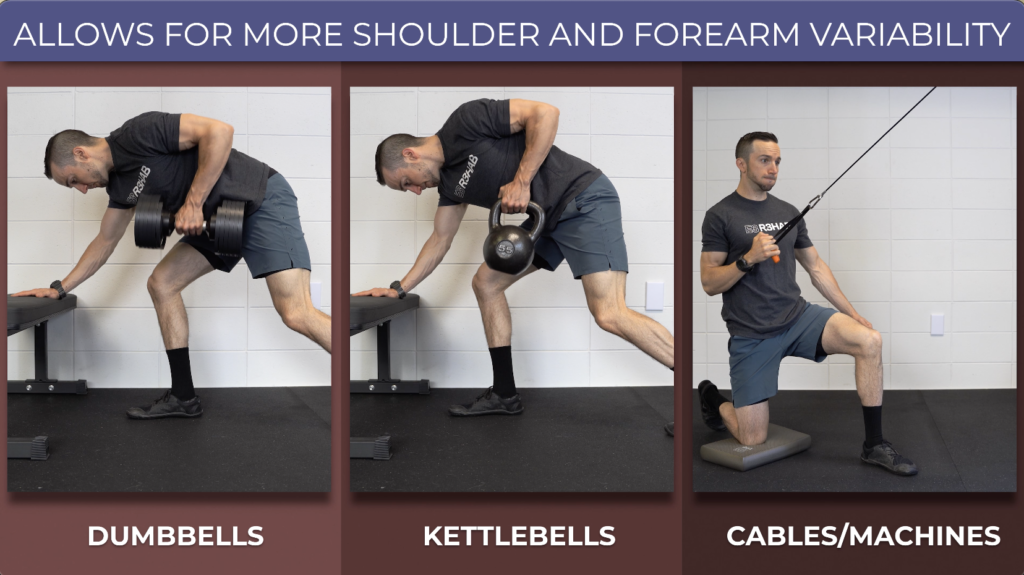
Do the Exercises Need to be Completely Pain Free?
Not necessarily. Here 3 parameters to follow:
- Keep pain tolerable during exercise. This is about a 3 out of 10 or lower (≤3/10).
- No increase in symptoms the next day. If pain is higher the next day, you may have done too much or pushed too hard. But don’t worry, this happens. Just make a note and adjust accordingly next time.
- You want to see gradual improvement over weeks to months. Are you able to progress weight or repetitions each week? Tolerate more activity? This process takes time, so measuring progress based on a longer time frame (instead of day to day) is recommended.

Can You Continue Playing Sports?
Yes, but again, follow the previously mentioned parameters regarding pain and make sure these do not hinder your progress with the exercise program. Additionally, you may need to consider manipulating the intensity, volume, and or frequency of your desired activity so that you are able to make it more tolerable. For example, maybe you can only tolerate playing 9 holes of golf as opposed to 18.
Summary
In order to most appropriately manage golfer’s elbow, or medial elbow tendinopathy, your goal is to build up the capacity of your elbow and surrounding tissues, so they can ultimately tolerate more load. You do this by reducing or modifying aggravating activities as needed and implementing exercises within a certain pain threshold.

Don’t forget to check out our Golfer’s Elbow Program!
Improving Elbow Range of Motion
How To Train Around Pain or Injuries
Thanks for reading. Check out the video and please leave any questions or comments below.


